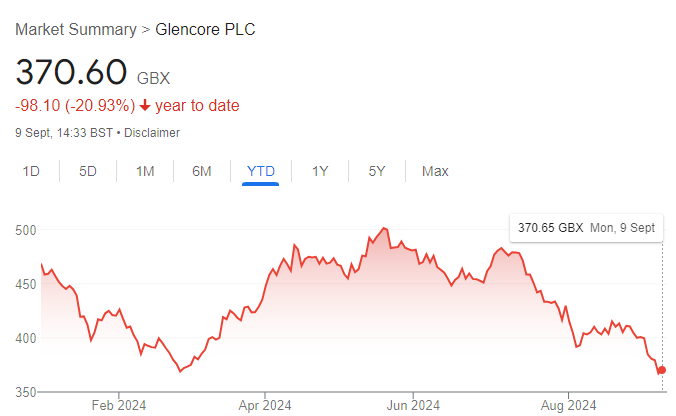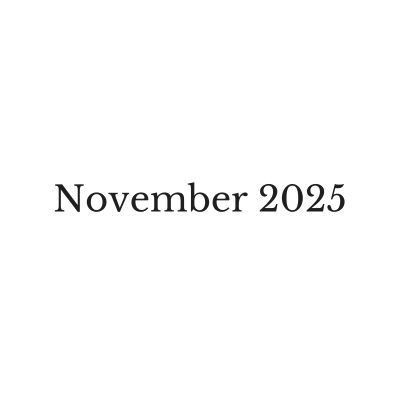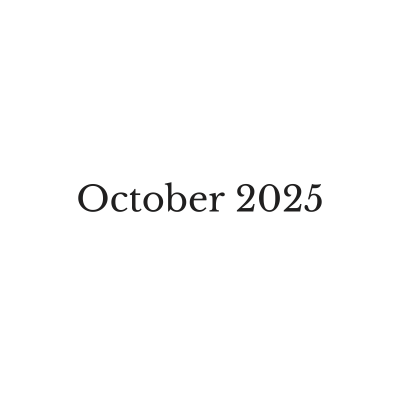Glencore's Performance and Dividend Outlook
09-09-24
Glencore (LSE: GLEN), a global mining and commodity trading giant, has faced significant challenges in 2024 alongside the FTSE100 Mining sector more broadly, largely influenced by a downturn in steel and brent crude prices.
Glencore recently reported a sharp decline in earnings for the first half of the year, with net income falling to $1.5 billion, and a net loss of $233 million after factoring in $1 billion in impairment charges. These results represent a 33% drop in adjusted EBITDA compared to the previous year, driven by weaker coal and steel prices, which are critical to Glencore’s portfolio.
Glencore’s declining revenues are mostly attributed to its marketing division which saw a 16% decrease in EBITDA, reflecting reduced volatility in energy markets. On the production side, the company’s margins remain relatively stable in its metals division, thanks to strong performances in copper and other transition metals like cobalt and nickel. However, the overall performance has been weighed down by lower energy contributions.
Despite the weaker performance in H1 2024, CEO Gary Nagle remains optimistic about the future.
The company expects global economic conditions to improve in 2024 as interest rates stabilise and demand for key metals, such as copper, grows, fuelled by the energy transition and demand for electric vehicles. Glencore is also focussing on enhancing its portfolio by retaining its coal and carbon steel operations which had previously been drawn into question amidst market hankering to spinoff the division. The business is now expected to retain long-term cash flow benefits from these divisions to support future growth in renewable energy and metals.
Dividend Cover
As of 2023, Glencore currently has a dividend yield of 2.6% and a dividend cover of 3.38 times. This is an increase from 2022, when it was 3.18 times and 2021 when it was 2.00 times.
Notably, this coverage implies that Glencore has room to either increase dividends in the future or reinvest profits back into the business while maintaining a reasonable payout ratio.

Figure 1. (LSE: GLEN) Year-To-Date share price chart
Glencore is currently trading at 370.60, near its annual lows having recently peaked 25% higher at 501.50 on 20th May.
If you believe a commodity rebound may be on the horizon, possibly boosting Glencore’s share price, then you may consider buying a long-dated call option.
Call Option
Trade Idea
Call Option
GLEN Cash Price = £3.706 (as of 09/09/2024 @ time of writing)
Total consideration: £179.03 (excl. fees + commissions)
1 (contract) x £0.175 (contract price) x 1023 shares (contract size) = £179.03 debit
A 25% increase on the current share price to £4.67 by 17-JAN-2025 expiry would value the call option @ £4.67 (share price) – £4.00 (strike price) = 67p for a total of £685.41 (please note contract size of 1023 shares); yielding a 282% return on your initial investment.
The £4.00 call option would break even if the Glencore share price increased to £4.175 at expiry on 17-JAN-2025
Defined risk profile, maximum loss of a long option position is equal to the premium paid.
The contents of this article are for general information purposes only. Nothing in this article constitutes advice to any person and any investments and/or investment services referred to therein may not be suitable for all investors. If you’re unsure whether any investment is right for you, you should contact an independent financial adviser. For more information, please see IMPORTANT DERIVATIVE PRODUCT TRADING NOTES.





